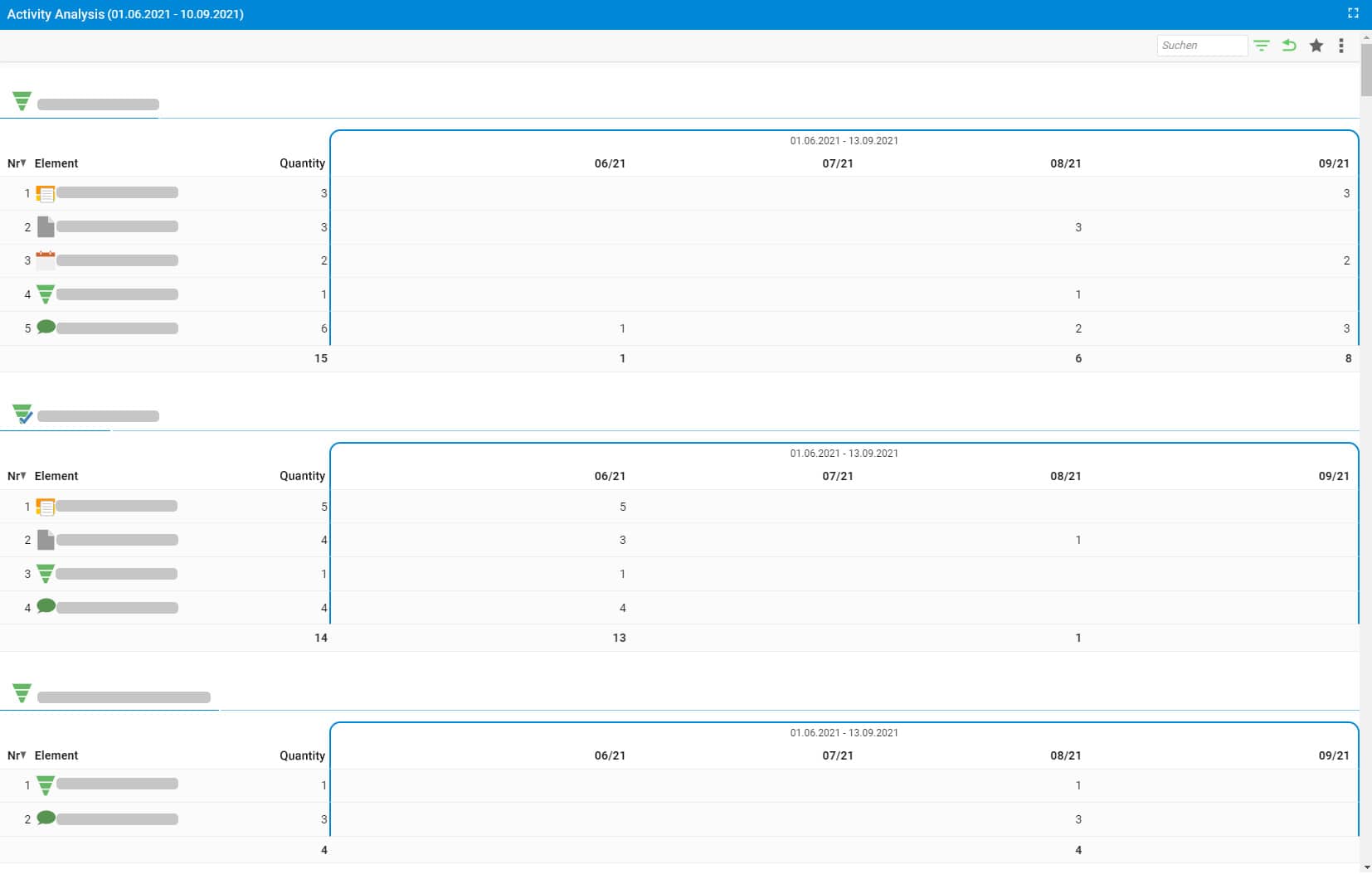Reliably measure sales success
Many companies have a more or less reliable gut feeling about how well their sales department is working. Of course, success can be read off quickly from incoming orders and the development of turnover. But where does it come from? Or what is the reason when things are not going so well? It is not uncommon for an objective analysis of sales to reveal one or two surprises.
Systematic sales controlling allows you to take a much closer look at what makes your sales successful (or not). You can recognise levers with which you can optimise processes or find out which customer groups and sales staff are most valuable for your business.
A closer look reveals many questions that are interesting for entrepreneurs and sales management and that you have certainly already asked yourself:
- What happened to prospect XY who was so promising last month?
- In which phase of our sales process do we lose the most prospects and why?
- What makes certain sales people so successful?
- How well are the key accounts of our company looked after?
These and similar questions can be answered with a suitable software like projectfacts. With the help of the new tools and features for your sales management from version 6.9 and the extended analysis options from version 6.10, you are well equipped to get the most out of your sales.
How have my leads developed?
Of particular interest for sales controlling is the question of how leads from the previous month have developed.
- How many leads were qualified?
- In which sales phase are the leads currently?
- How much turnover is expected to be generated?
You can answer these questions with the “Sales Opportunity Analysis” report. Here, all active sales opportunities are recorded and brought together. The overview shows you at a glance how many sales opportunities have been created and what their current value is.
This allows you to easily make comparisons over time and compare the number of leads with previous months, for example, to identify trends. The current value shows you the expected turnover that can probably be generated with the existing leads.
The current value can be calculated individually, for example as the sum of one-time and recurring revenue. It is also multiplied by the purchase probability of the current sales phase. This gives you a realistic estimate of your sales potential. You can find more information on KPIs that you can include in the calculation in our article on sales management.
It also breaks down which sales phase the leads are in and what their current status is. This offers you various evaluation options:
Where are there weaknesses in the sales process?
The sales opportunity analysis report is an effective sales controlling tool. A look at the development of sales opportunities reveals possible weaknesses in the sales process.
The relative percentage of prospects per phase gives you an overview of the conversion rates in sales. It tells you what percentage of prospects move to a subsequent phase or leave the sales process at this point.
In this way, you can see at a glance whether a particularly large number of prospects are lost in a particular sales phase. This gives you a suitable lever to optimise your sales work at this point.
What activities were carried out with key accounts?
Key accounts play a special role in sales controlling, because they continuously provide new sales potential. It is therefore all the more important to keep an eye on whether key accounts are being optimally looked after.
This applies to both the customer organisation and the decision-maker within the customer company who is responsible for placing orders. Both can be identified and analysed in projectfacts.
Are you interested in what happened to such a specific contact? No problem thanks to the activity analysis. Once selected, the software shows you all tickets, appointments, documents etc. that are assigned to the contact. If you wish, you can jump directly to linked elements and thus have a full overview of all activities related to the contact.
The activity analysis provides you with a complete overview of activities related to a specific element in projectfacts. It is therefore also suitable for a variety of other analyses:
The activity analysis provides you with a complete overview of activities related to a specific element in projectfacts. It is therefore also suitable for a variety of other analyses:
- What activities were undertaken in a particular sales opportunity?
- What has a particular sales person worked on in the last week?
- Which tickets are related to a specific key account?
- and much more.
Questions about the software for your sales controlling?
If you would like more information about the sales controlling features in projectfacts, please contact our consulting team. They will be happy to support you with the setup.
No projectfacts yet? Test the software for your sales controlling for 14 days free of charge and without obligation.
Header image: © Markus Winkler – unsplash.com (2021)


